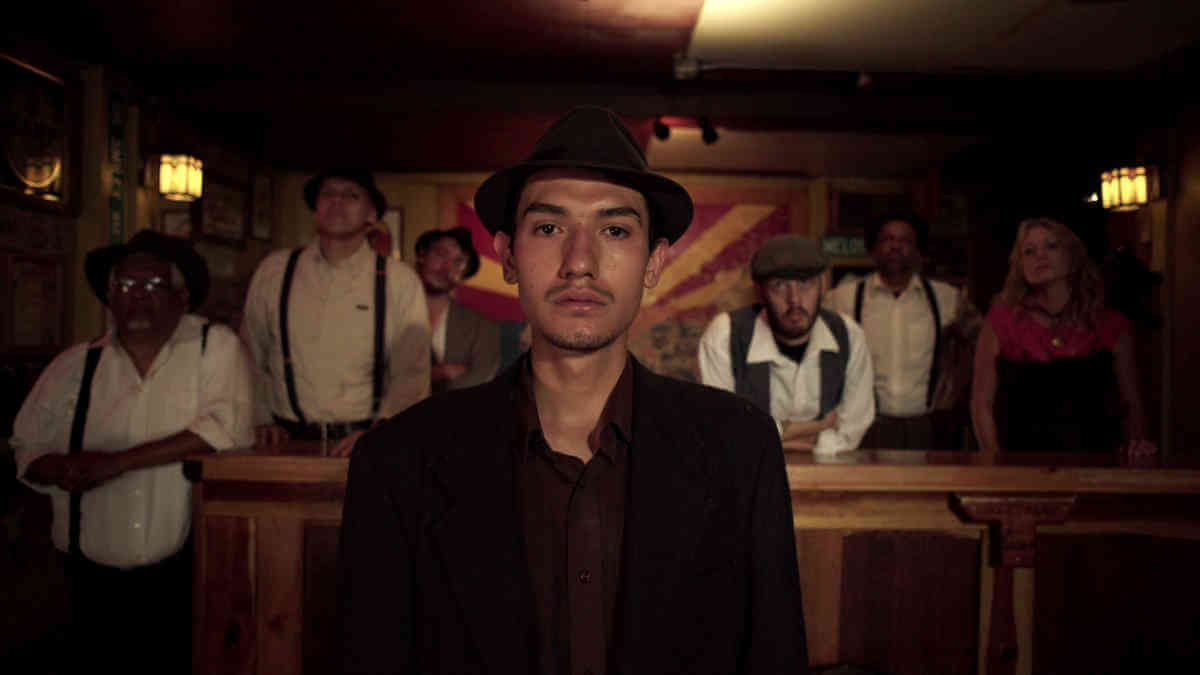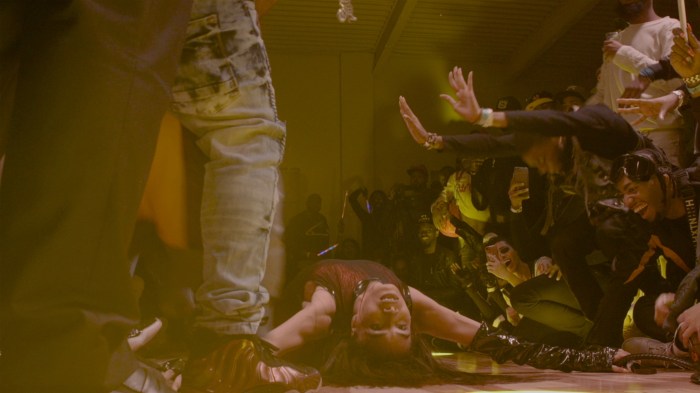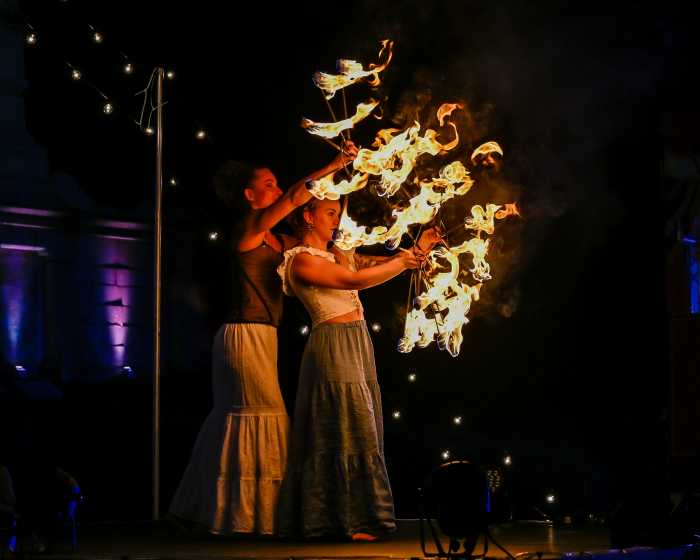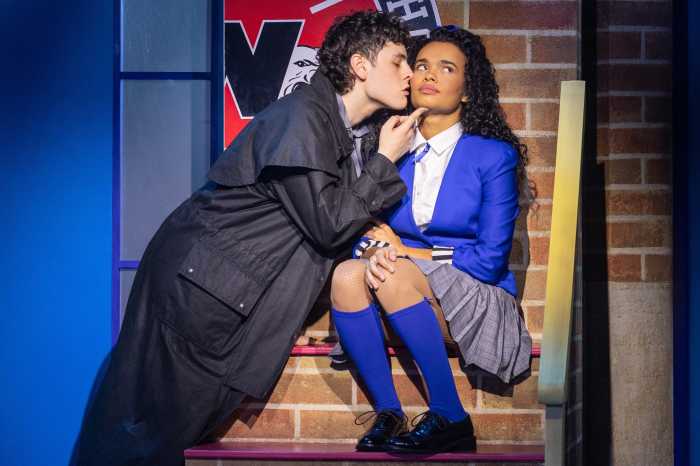In his novel “Requiem For a Nun,” William Faulkner wrote, “The past is never dead. It’s not even past.” That quote is now too famous for director Robert Greene to use an epigraph for his hybrid non-fiction film “Bisbee ’17,” but it’s a very fitting way to describe a movie whose imagery suggests an American version of the Holocaust tied together with premonitions of our contemporary disastrous xenophobia.
The title refers to an Arizona town “celebrating” the 100th anniversary of an event in 1917 when 2,000 immigrant miners — mostly Latino, but also Eastern European — in Bisbee were forced into a freight train and sent to starve to death in the New Mexico desert for the crime of organizing into a union.
Greene’s model seems to be the radical British-born director Peter Watkins. I’m sure this was conscious on Greene’s part, since he’s said his favorite film is Watkins’ “Edvard Munch.” Watkins cast his work with non-professional actors who shared the political views of the characters they played, and Greene continues this process: he works with people with whom he obviously disagrees strongly. The concept of the desert death march evokes Watkins’ “Punishment Park,” even if it really took place.
Actors constantly find connections to the real histories of their families: one sees the name of his late father outside an abandoned mine. The gay Mexican-American actor Fernando Serrano, who becomes the most central person “Bisbee ‘17” settles on, relates to the story because his mother was deported back to Mexico on drug charges when he was a child.
“Bisbee ‘17” embarks on a revision of the kind of historical recreation that leads other people to restage Civil War battles in parks. In fact, the town of Bisbee is very close to both Tombstone and the Mexican border, and Greene consciously offers a revisionist version of the spectacles of American history frequently staged around the country. If conventional historical reenactments show men pretending to be outlaws firing blanks into each other in the middle of the street, the film does something much more ambitious. In the process of making “Bisbee ’17,” Greene tries to force the residents of Bisbee to confront their town’s ugly history and the spectators of his film to learn about this forgotten chapter of America’s past and think about its connection to the nastiness of our present moment.
I have the unpopular opinion that Greene’s last film, “Kate Plays Christine,” is his weakest (although he’s disowned his debut, “Owning the Weather,” as too conventional and impersonal), but it’s unsatisfying and frustrating by design. The tale of the making of a narrative film about TV news anchor Christine Chubbuck, who blew her brains out live on air in the early ‘70s, it offers scenes of casting and rehearsal, but its true agenda is demonstrating the impossibility of telling Chubbuck’s story and even the failure of basic empathy. The film suggests that it’s futile, voyeuristic, and implicitly sadistic to try representing states of depression and suicidal thoughts, especially when a male director and cinematographer are filming a female actor.
“Bisbee ‘17” plays its funny games in a far friendlier and more accessible, but still pointed, way. In a bravura long take, Serrano (dressed in period costume) seemingly walks from the present into the past, going to a smoke-filled stage as he announces his name and his role in the film. Other actors also introduce themselves to the camera. Here, Greene is interested in a different kind of hybrid: juxtaposing the past and present, and the facts of that past with the fiction he’s creating now. The difference is that this fiction is relatively convincing. Greene proves that he could direct a fairly good conventional period piece if he wanted to, although he obviously doesn’t.
For a film with radical aims, “Bisbee ‘17” winds up being rather reassuring. It never mentions Donald Trump’s name once, but the parallels between the violent behavior of the men in power in 1917 and those of our current leaders are impossible to miss. But most of the tragedy it depicts belongs to the past. Near the end, someone describes the film’s project by saying, “This is like the largest group therapy session.”
Greene dodges the ethical issues that come with films that fictionalize the Holocaust or other massive historical tragedies by constantly having his actors talk to the audience as themselves and remind us that we’re watching some highly mediated mix of documentary and narrative. Hell, there’s even a musical number. But “Bisbee ‘17” leaves Serrano stranded between two worlds.
At the end, I felt that it could have delved much further. Joshua Oppenheimer’s “The Act of Killing,” in which Indonesians who killed “communists” with their government’s blessing and suffered no consequences reenact their murders in cinema, takes on a similar project of re-creation, and it’s so bleak that it’s almost unwatchable. “Bisbee ‘17” deals with violence that’s 100 years in the past, not within its subjects’ lifetimes, and that distance may be partially responsible for a film that works more on a conceptual level than as an engagement with American history’s own bleakness.
BISBEE ’17 | Directed by Robert Greene | In English and Spanish with English subtitles | 4th Row Films | Opens Sep. 5 | Film Forum, 209 W. Houston St. | filmforum.org






























